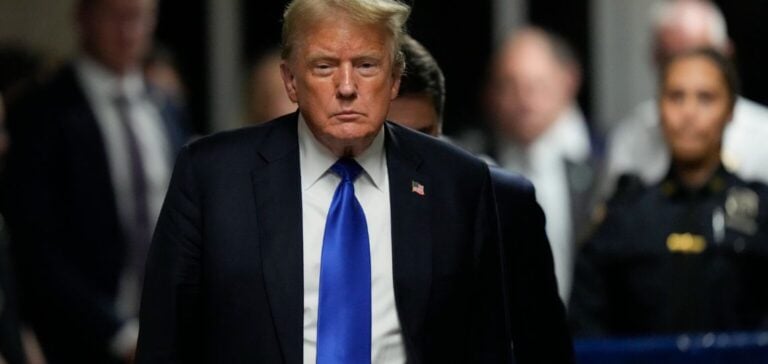Donald Trump’s proposal to impose 25% tariffs on all imports from Canada and Mexico could disrupt the economic balance of North America. These two countries, which account for nearly 30% of U.S. imports, provide essential goods such as automotive parts, hydrocarbons, metals, and lumber.
The economic consequences of this policy will be felt on multiple levels. Experts note that manufacturing industries heavily reliant on raw materials from these neighboring countries could see their costs surge. “The automotive sector has spent decades building a supply chain infrastructure across North America,” explains John Lash, vice president at e2open. “These materials sometimes cross borders multiple times before being assembled.”
Increased Risk for Businesses
Companies facing these tariffs will have to choose between absorbing costs or passing them on to consumers. Rodney Lake, director of the GW Investment Institute, highlights that slim profit margins make absorbing such costs unsustainable: “A 25% tax on already low-margin products is untenable for many economic players.”
Consumers, already impacted by persistent inflation, will likely see price increases for durable goods, furniture, and vehicles. The latest consumer price index rose 2.7% in November, underscoring ongoing inflationary pressure.
Impact on Trade Agreements
Such a measure could violate the United States-Mexico-Canada Agreement (USMCA), in force since 2020. However, Trump could invoke emergency national laws to bypass these agreements. Richard Mojica, a trade specialist at Miller & Chevalier, explains that national security or immigration concerns could justify these tariffs: “This threat could also serve as leverage to renegotiate certain USMCA provisions.”
The agreement is scheduled for review in 2026, with expiration set for 2036. Observers suggest that discussions may be accelerated if tariffs are used as a negotiation tool.
Resilient Consumers, But for How Long?
Despite rising prices since 2020, U.S. consumers have remained resilient. Retail and food services sales increased by 0.4% in October, exceeding analysts’ forecasts. This resilience may give a Trump administration additional justification to pursue this tariff strategy. “Consumers have shown their ability to absorb temporary price increases,” notes Lake. “The goal would be to endure short-term sacrifices to promote the reshoring of supply chains.”
However, the cumulative effect of cost increases on businesses and consumers could quickly reach its limits. Inflationary pressures and financial market tensions will add further economic uncertainty.





















